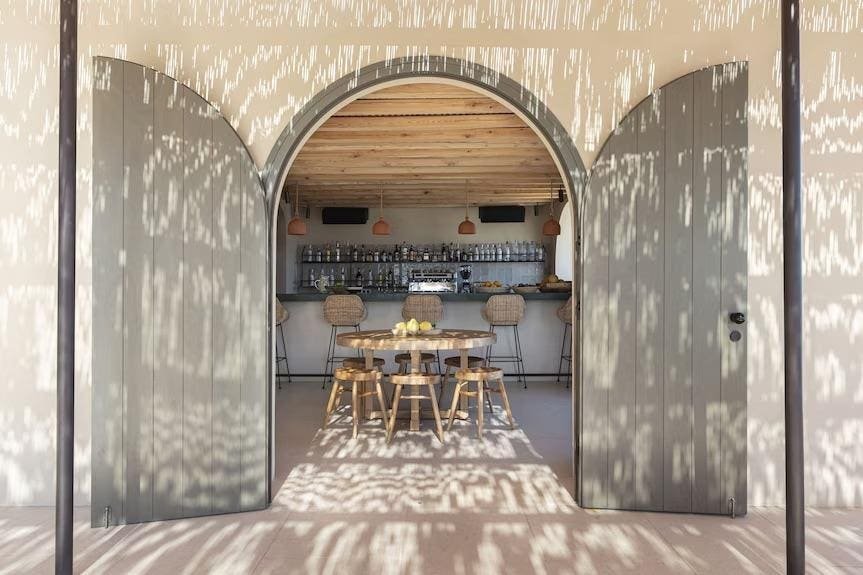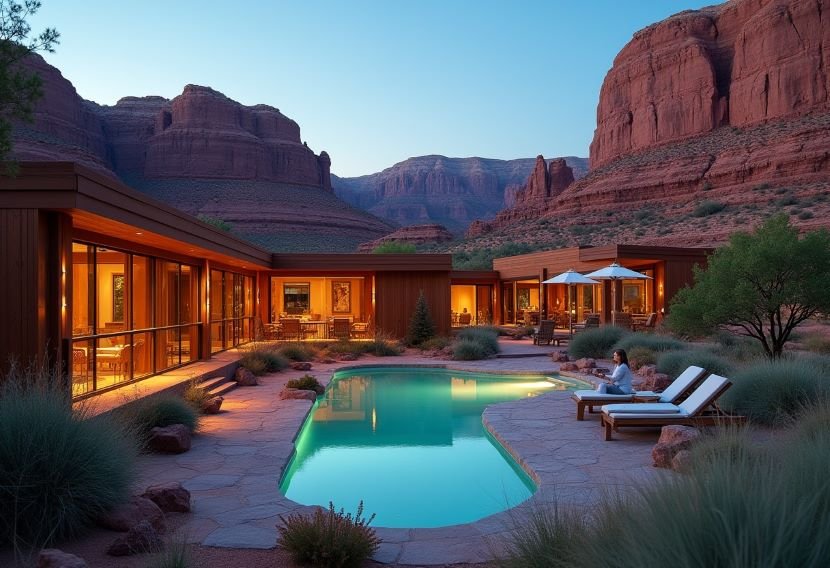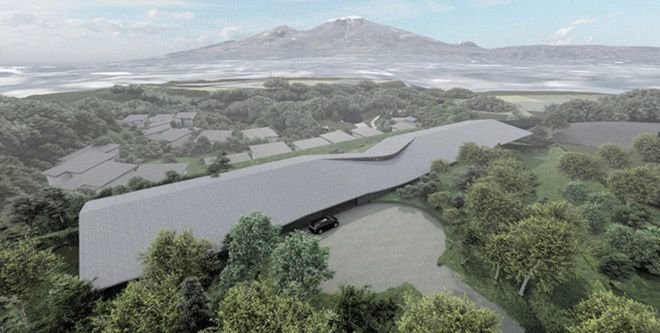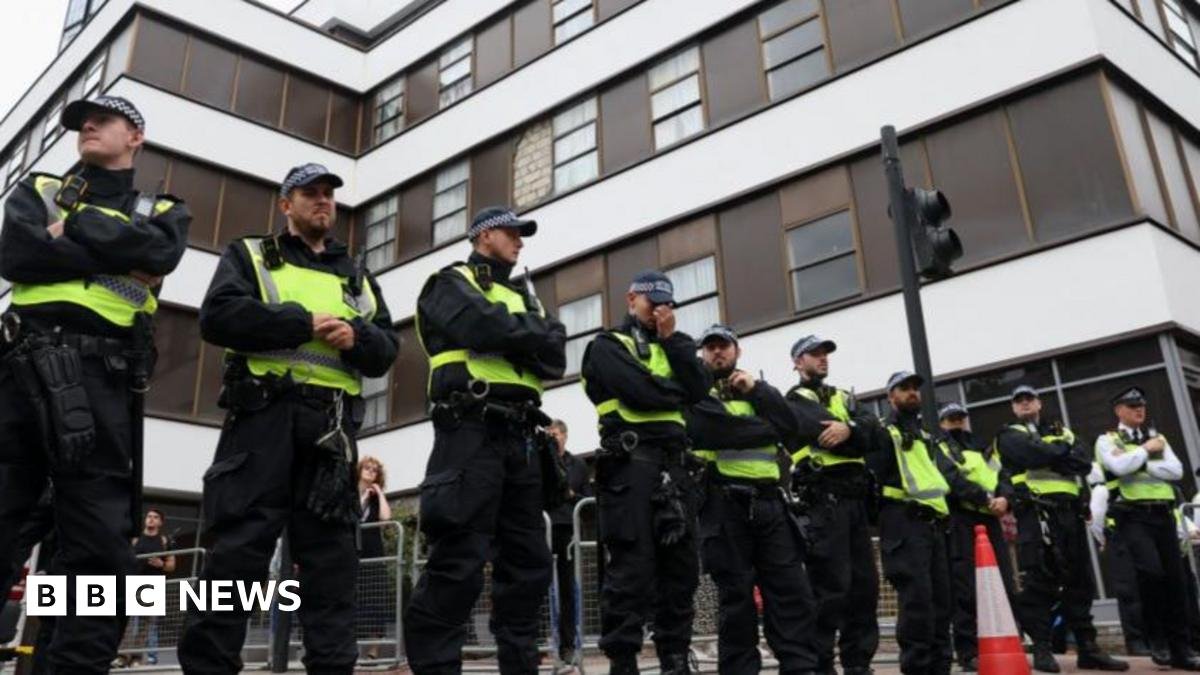Hotels & Accommodations
Mediterranean Design Hotels To Visit In August And Beyond

NOS Hotel Sifnos
NOS Hotel Sifnos
As the crowds slowly retreat from the beaches and the air begins to soften, late summer in the Mediterranean becomes something entirely different. Quieter, clearer, and more intimate, it’s the season for those who prefer long, barefoot afternoons and unhurried dinners under the stars. The hotels below reflect that energy. Each one is built with intention, designed to feel like a place you return to, not just pass through.
Here’s where to go when you want summer to last a little longer.
Situated on a private peninsula near Agios Nikolaos, this adults-only and eco-conscious retreat focuses on immersive calm. The design incorporates stone, wood, and local greenery, with an atmosphere that’s best described as quietly elevated. There’s a deep emphasis on wellness, both through their own longevity hub and the overall rhythm of the place.
Minos Palace Resort Crete
Minos Palace Resort
By early September, Crete is still warm, but the intensity eases. The crowds thin, and places like Minos Palace come into their own. It’s a destination for travelers who don’t need to be entertained, just taken care of.
Built directly into the red cliffs of the Côte d’Azur, this modernist hotel focuses on elemental pleasures. Saltwater pools, natural rock terraces, and interiors in sun-washed ochre and white create a kind of 1960s Riviera dream. There’s no DJ, no curated playlist, just long lunches, sea swims, and timeless light.
Les Roches Rouges Hotel Beach & Pool
Les Roches Rouges
By late summer, the South of France returns to a more authentic rhythm. Les Roches Rouges is made for that pace, when the only thing left to do is open a bottle of Bandol rosé and watch the tide come in.
Just outside the buzz of Naoussa sits Summer Senses, a serene hillside retreat with wide sea views, three pools, and spacious suites that feel built for slow mornings. The design stays true to Cycladic simplicity, but the real luxury lies in the mood: calm, grown-up, and completely unforced.
Sunrise at Summer Senses Resort Paros
Summer Senses Resort Paros
While most of Paros shifts into high gear in August, this spot holds a steady pace. It’s close enough to reach the island’s best restaurants and beaches in minutes, but far enough to feel like you’re on your own schedule. As the season stretches into September, the balance between peace and proximity becomes even more appealing.
On a quiet peninsula outside Bodrum, this resort blends serious comfort with a relaxed coastal rhythm. The private beach, infinity pools, and sprawling spa invite you to unplug without ever feeling isolated. Rooms, suites and villas open onto terraces where the view of the Aegean feels like part of the architecture.
Mandarin Oriental Bodrum
Mandarin Oriental
By late August, the coast here is still sun-drenched, but the mood shifts. The party energy fades and Bodrum returns to something more genuine. Mandarin Oriental captures that transition perfectly. You’re surrounded by nature, but everything is effortless, from breakfast in the olive groves to an evening hammam treatment that erases any sense of urgency.
Newly opened on one of the Cyclades’ most rugged islands, Gundari is carved into the cliffs with 27 limestone suites and villas, each with private pools and panoramic views. It feels both elemental and luxurious, the kind of place where you arrive and instantly lower your voice.
Gundari’s Infinity Pool at Sunset
Gundari
Folegandros has long been a quiet alternative to its more photographed neighbors, and late summer is the island at its best. The air is still warm, but the silence deepens. With menus curated by Michelin-starred chef Lefteris Lazarou and a swim-up bar that feels almost like a mirage, Gundari is where design meets total detachment.
There’s a simplicity to NOS that feels completely aligned with the island around it. Built of natural stone and wood, the hotel overlooks a sheltered bay near Faros. Rooms are minimal in the right way, grounded by hand-thrown ceramics and open-air showers that make the most of the light.
NOS Hotel Sifnos
NOS Hotel Sifnos
Sifnos has always attracted a different kind of traveler, and in late summer the island slows into itself. The tavernas feel more local again, and the beaches stretch out with fewer footprints. NOS gives you that experience in real time, whether you’re returning from a pottery village or sipping a glass of chilled Assyrtiko by the pool.
Tucked between Santa Gertrudis and San Rafael, this new opening offers a version of Ibiza few visitors ever see. With just 14 rooms and villas set among olive trees and regenerative gardens, the Farmhouse feels more like an artists’ residency than a hotel. There’s sunrise yoga, community dinners, and quiet spaces for reflection or collaboration.
Soho Farm House Ibiza
Soho Farm House Ibiza
As the island shifts from peak season into its calmer weeks, this is exactly the kind of Ibiza worth experiencing. One where the energy comes from nature, food, and conversation, not speakers or schedules.
Set just above Mykonos Town, these suites (as part of Belvedere Hotel Mykonos) offer a quieter perspective on the island without sacrificing access to it. Interiors are sleek and airy, filled with soft Cycladic light, and some come with private plunge pools or terraces overlooking the Aegean.
Belvedere Hotel Mykonos Hilltop Suites
Belvedere Hotel Mykonos
What makes it special isn’t just the design, but the ease of dipping in and out of the scene. You can have a slow breakfast in silence overlooking town, a spa treatment at the Six Senses Spa or a romantic sunset dinner at Matsuhisa (both located at main Belvedere Hotel), then be at a beach club or cocktail bar in ten minutes. Late summer is the best time to be here. Mykonos is still warm and lively, but the intensity has lifted, and that makes the hilltop location feel even more like a smart choice.
Blended into the raw beauty of the Akamas Peninsula, AYA is Cyprus’s most thoughtful new opening. The design is stripped back and grounded in nature, with limestone walls, native gardens, and 48 suites that face the sea with nothing in the way. Interiors are eco-conscious, minimal but warm, blending natural textures with soft light and open space. The spa focuses on Cypriot herbs and rituals, with treatments that feel intuitive rather than clinical.
The new Aya Resort in Cyprus
Aya Resort
AYA is built for a slower rhythm. Days start with herbal tea on a sun-drenched terrace, followed by saltwater swims or walks along the cliffs. At night, mezze is served by candlelight, and the sound of the sea replaces the usual soundtrack. It’s not a place for show. It’s a place to return to yourself.
Located on the southern coast of Sardinia, this adults-only Relais & Châteaux property is a masterclass in understatement. There are no flashy design statements here, just classic Mediterranean architecture, curated calm, and immaculate gardens leading to a private beach. The service is quiet and precise, the rooms designed for rest.
La Villa Del Re, Sardinia
©Francesca_Anichini_Studio
Sardinia in September offers some of the best weather in the region with a fraction of its high season tourism. This is the moment La Villa del Re was made for.
A new entry to the Relais & Châteaux family, Borgo Santandrea sits high above the Amalfi Coast with views that could double as oil paintings. Every room is unique, dressed in custom tiles and mid-century Italian design. An elevator carved into the cliff connects the hotel to its private beach, one of the few on this stretch of coast.
The Amalfi Coast is still warm in September, but the cruise ships start to clear out, and the beauty becomes easier to absorb. This is the refined, post-summer version of the destination — still cinematic, but finally breathable.
Borgo Santandrea in Amalfi
Borgo Santandrea
Summer starts its final chapter. The light changes. The noise softens. And with the right hotel, the season lingers a little longer than it should.
Hotels & Accommodations
US Hotel Industry Sees Mixed Performance in Week Ending July, St. Louis Showing Growth Amid Declines

Sunday, August 3, 2025
The latest data from CoStar, a leading provider of real estate analytics, paints a challenging picture for the US hotel industry for the week ending July 26, 2025. Despite recovery signs in certain markets, the overall year-over-year performance indicates slight declines in key metrics such as occupancy, average daily rate (ADR), and revenue per available room (RevPAR). These results reflect a mix of ongoing challenges in the hospitality sector, as well as regional variations across the country.
The overall trend of negative growth in hotel performance for the week compared to the same period in 2024 highlights the ongoing uncertainty facing the industry. However, the report also sheds light on specific markets, such as St. Louis, which recorded positive movement, contrasting the general trend. This article will delve into the details of the data and explore the implications for both hotel operators and travelers.
US Hotel Industry Performance Overview
For the week ending July 26, 2025, the US hotel industry experienced slight declines in all key performance metrics compared to the same week in 2024. The following are the reported figures for occupancy, ADR, and RevPAR:
- Occupancy: 71.5% (-0.7%)
- Average Daily Rate (ADR): $164.88 (-0.1%)
- Revenue per Available Room (RevPAR): $117.88 (-0.8%)
These figures indicate that while the hotel industry continues to experience a relatively strong level of occupancy, the overall revenue generated per available room remains under pressure. The decline in ADR by 0.1% and RevPAR by 0.8% suggests that hotels are still grappling with pricing pressures, particularly as travelers remain cautious about their spending.
Despite the slight year-over-year declines, the overall occupancy rate remains relatively healthy, indicating that demand for hotel accommodations is still stable, albeit with less momentum than in previous periods. However, challenges persist, especially in markets that are struggling to recover from unique regional disruptions.
St. Louis: A Bright Spot Amid the Decline
While many US markets have seen a decline in key performance metrics, St. Louis stands out as a notable exception. The city reported the highest occupancy increase among the Top 25 Markets for the week, with a 5.7% year-over-year rise in occupancy, bringing the rate to 70.9%. This increase can be attributed to a combination of factors, including targeted marketing campaigns, local events, and the city’s growing appeal as a mid-sized destination for both business and leisure travelers.
St. Louis has been positioning itself as a vibrant hub for tourism, with increased efforts to attract more visitors through cultural and recreational offerings. The strong occupancy growth in the city suggests that these efforts are beginning to pay off, as it bucks the overall downward trend seen across much of the US hotel industry.
The performance of St. Louis highlights the importance of localized factors in the hotel industry. While national trends may show overall stagnation or slight declines, specific markets are capable of outperforming the broader trends due to strategic initiatives, favorable local conditions, and the adaptability of hotel operators.
Houston: A Struggling Market
On the opposite end of the spectrum is Houston, which recorded the steepest declines in all three major performance indicators. The city saw a significant drop in occupancy, down by 19.7% to 61.1%. The ADR also fell by 7.7%, reaching $117.02, while RevPAR saw the sharpest decline, down by 25.9% to $71.54.
These declines are primarily attributed to the elevated displacement demand that followed Hurricane Beryl in 2024. Many hotels in Houston experienced a surge in bookings due to the temporary displacement of residents and business travelers during and after the hurricane. As the region returned to normal, this temporary spike in demand was not sustained, leading to a sharp decrease in performance metrics.
Houston’s struggles serve as a reminder of how external factors, such as natural disasters and regional disruptions, can significantly impact hotel performance. As recovery efforts continue, it is essential for operators in affected regions to manage expectations and plan accordingly to regain stable occupancy levels.
Regional Variations and Market Adaptations
The US hotel industry is highly diverse, and performance trends can vary significantly from one region to another. In addition to the notable performances in St. Louis and Houston, other markets are showing mixed results. Cities with strong business travel demand, such as New York and Los Angeles, are likely to continue to perform relatively well, while more leisure-focused destinations might experience fluctuations depending on seasonal trends and consumer confidence.
The key to navigating this complex landscape will be for hotel operators to adapt their strategies based on local demand drivers. With the recovery from the COVID-19 pandemic continuing to evolve, it is crucial for hotels to remain agile, adjusting pricing, marketing, and service offerings to meet changing consumer needs.
Looking Ahead: A Challenging Road for US Hotels
The US hotel industry faces a mixed outlook as it continues to recover from the disruptions of the past few years. While key markets such as St. Louis show promising growth, other cities like Houston are grappling with the aftermath of regional challenges. The slight year-over-year declines in occupancy, ADR, and RevPAR indicate that the road to full recovery will be slow and uneven, with some regions bouncing back more quickly than others.
For hotel operators, the focus must remain on improving efficiency, maintaining high service standards, and responding swiftly to emerging trends. Additionally, keeping track of local market conditions will be vital for adapting to the demands of travelers in a post-pandemic world. As the industry continues to adjust to changing travel patterns, operators will need to stay ahead of the curve by focusing on delivering value to their guests while managing operational costs.
Conclusion
The latest data from CoStar paints a picture of a hotel industry in transition, facing both challenges and opportunities. While national trends indicate slight declines in key performance metrics, specific markets like St. Louis show that targeted strategies and regional initiatives can yield positive results. Meanwhile, cities like Houston remind us that external factors such as natural disasters can have a long-lasting impact on hotel performance.
As the US hotel industry navigates these challenges, the focus must remain on adaptability, efficiency, and customer satisfaction. The ability to respond to local demands and capitalize on emerging trends will be crucial to maintain profitability and sustaining long-term growth. With the hospitality sector continuing to recover, it is clear that the industry is in a period of flux, but the potential for success remains strong in markets that can adjust and innovate effectively.
Hotels & Accommodations
Royal Holdings in tie-up to open 21 luxury hotels in Japan by 2035

Restaurant operator Royal Holdings Co. is teaming up with Minor Hotels, the largest hotel group in Southeast Asia, to develop luxury hotel accommodation in the Japanese market.
The company plans to open 21 hotels across Japan by 2035, targeting wealthy foreign tourists from the more than 36 million people who visit each year.
Based in Thailand, Minor Hotels operates more than 560 luxury hotels and resort facilities in 57 countries.
It is also a member of the Global Hotel Alliance, the world’s largest alliance of independent hotel brands, serving 30 million members.
It will be Minor Hotels’ first foray into Japan.
Royal Holdings and Minor Hotels established a joint venture earlier this year.
On July 10, they unveiled plans to open Anantara Karuizawa Retreat, a hotel and resort facility, in Karuizawa, Nagano Prefecture, in 2030, partnering with general real estate firm List Group.
Anantara is Minor Hotels’ flagship brand.
Situated on a 42,000-square-meter plot overlooking Mount Asamayama, the facility will have 51 guest rooms, of which 23 are suites, It will also boast a spa, swimming pool and restaurants.
The companies are preparing to apply for confirmation for construction.
Accommodation fees and other details have yet to be determined.
William Heinecke, founder and chairman of Minor International, which operates Minor Hotels under its umbrella, told a news conference in Tokyo that Japan is the first choice of overseas destination for Thai people.
He expressed gratitude that the globally recognized hotel brand of Anantara had been accepted in the Japanese market.
Royal Holdings started in-flight catering services and operating a cafe at Fukuoka Airport in 1951.
The company has operated the Royal Host family restaurant chain as well as the Shakey’s pizza chain since the 1970s.
In addition, it operates restaurants at airports, expressway facilities and hospitals, and runs Tenya, a restaurant chain specializing in tempura rice bowls.
As for its hotel business, the company opened its first Roynet Hotel (present-day Richmond Hotel) in 1995. It currently manages 43 Richmond Hotels, which target business travelers.
“We want to operate hotels aimed at wealthy visitors from abroad in tourism destinations and cities around the country as a way to expand the scope of our business,” said Royal Holdings President Masataka Abe.
Hotels & Accommodations
Arrests after asylum hotel protests in England

A series of protests outside the migrant hotels have been taking place in recent weeks.
The protest in London on Saturday was held outside of the Thistle City Barbican Hotel in Islington, with a counter-protest led by the group Stand Up To Racism.
The Met said the protest was organised by local residents under the banner “Thistle Barbican needs to go – locals say no”.
But police said it had been “endorsed by groups from outside the local community which is likely to increase the number of people attending”.
The MP for Islington North, former Labour Party leader Jeremy Corbyn had urged people to join the counter-protest.
The police had imposed special restrictions ahead of the London demonstration, including setting out specific areas where each group had to remain.
In Newcastle, a protest and counter-protest took place outside The New Bridge Hotel.
Four people were arrested and remain in custody, according to Northumbria Police.
“The right to lawful protest is a key part of any democracy, which the police uphold,” a spokesperson for the force said.
“However, we will not accept people using them as a means to commit crime or disorder.”
About 1,500 people waved England and Union flags in a march organised by the Britain First group from Manchester Piccadilly rail station to outside the Central Library, where they held a rally.
About 250 people were also estimated to be at a counter-demonstration led by the Stand up to Racism organisation, with police keeping the groups apart in St Peter’s Square.
Greater Manchester Police said that a “number of demonstrations passed by peacefully” with “no incidents of note”.
But two arrests were made during a confrontation at the start of the march, the statement added.
One person was arrested for theft and the other for obstructing an arrest.
-

 Brand Stories2 weeks ago
Brand Stories2 weeks agoBloom Hotels: A Modern Vision of Hospitality Redefining Travel
-

 Brand Stories1 week ago
Brand Stories1 week agoCheQin.ai sets a new standard for hotel booking with its AI capabilities: empowering travellers to bargain, choose the best, and book with clarity.
-

 Destinations & Things To Do2 weeks ago
Destinations & Things To Do2 weeks agoUntouched Destinations: Stunning Hidden Gems You Must Visit
-

 Destinations & Things To Do1 week ago
Destinations & Things To Do1 week agoThis Hidden Beach in India Glows at Night-But Only in One Secret Season
-

 AI in Travel2 weeks ago
AI in Travel2 weeks agoAI Travel Revolution: Must-Have Guide to the Best Experience
-

 Brand Stories4 weeks ago
Brand Stories4 weeks agoVoice AI Startup ElevenLabs Plans to Add Hubs Around the World
-

 Brand Stories3 weeks ago
Brand Stories3 weeks agoHow Elon Musk’s rogue Grok chatbot became a cautionary AI tale
-

 Asia Travel Pulse4 weeks ago
Asia Travel Pulse4 weeks agoLooking For Adventure In Asia? Here Are 7 Epic Destinations You Need To Experience At Least Once – Zee News
-

 AI in Travel4 weeks ago
AI in Travel4 weeks ago‘Will AI take my job?’ A trip to a Beijing fortune-telling bar to see what lies ahead | China
-

 Brand Stories4 weeks ago
Brand Stories4 weeks agoChatGPT — the last of the great romantics













You must be logged in to post a comment Login